

Arthur Robb Lion Class Sloop 1953 - Sold

Arthur Robb Lion Class Sloop 1953
| Designer | Arthur Robb |
|---|---|
| Builder | Woodnuts, Bembridge |
| Date | 1953 |
| Length overall | 34 ft 9 in / 10.6 m |
| Length deck | 34 ft 9 in / 10.6 m |
| Length waterline | 23 ft 11 in / 7.3 m |
|---|---|
| Beam | 8 ft 9 in / 2.67 m |
| Draft | 4 ft 6 in / 1.37 m |
| Displacement | 6.96 Tonnes |
| Construction | Splined mahogany planking, oak frames |
| Engine | Beta 18 HP |
|---|---|
| Location | United Kingdom |
| Price | Sold |
These details are provisional and may be amended
BROKER'S COMMENTS
Designed by Arthur C Robb, MBE the first Lion was built in 1950 and beat most of her contemporaries in that year’s Round the Island Race. This was a fine achievement as the race was mostly to windward and she drew only 4 ft 6. She entered one other race that season and won, but she was primarily a cruiser and indeed an excellent cruising yacht for up to four people. She is admired wherever she goes, especially for her lovely blue hull and flared wineglass transom - unique to this Lion. Her rig and deck equipment have been upgraded every year to enhance performance and she is now in a race winning state, where a fine pedigree (Sydney-Hobart wins in 1959 and 1960 for a sister ship SIANDRA) and ease of handling make her difficult to beat in 12 – 18 knot winds. She is offered for sale with her HGV trailer enabling local storage out of season - She has wintered under cover since 1995.
Lion owners included the John Lewis Partnership SABEEMA and Major Richard Gatehouse’s REFLECTION, aboard which he tested his famously indestructible B&G instruments in the 1970s. Production dwindled in the 1960s although Bristows Book of Yachts claims 140 had been built by 1964 and a last few were made with GRP hulls and timber decks all in teak by Cheoy Lee in Hong Kong. LEONIE herself has cruised extensively to France and the south coast of the UK, typically sailing two up. Equipped for racing however, the results speak for themselves with a consistent series of wins in two of the major UK classic regattas year after year.
Construction
Mahogany planking on steamed oak frames, built by Woodnuts, IOW. The hull was stripped and epoxy splined around 1995. The deck is Coelan coated teak strip planking laid over original sub deck, believed pine. Tiller steering; beautifully balanced and finger light on the helm.
Accommodation and domestic equipment
- The saloon was remodelled in 1995; constructed in ash and mahogany - The galley is now at companionway entrance for better headroom, access and ventilation - Galley worktop tiled in beige - Deep stainless steel single bowl sink brass antique taps with pressurized hot and cold water - Bronze fresh water tap manual pump - Taylor’s gimballed brass pressurized cooker with oven and paraffin tank below - Bronze mushroom vent above - Storage below chart table for tools etc - Quarter berth space used for bulk storage, fridge etc. - 4 x dry storage compartments - 2 x 2m berths with moveable wedge to make double. Cushions to fit - Overhead lights and paraffin lamp - Storage spaces at sides of berths - Fully fitted cushions - Central table with two drawers and engine beneath - Medicine cupboard - Head compartment moved slightly and WC replaced with a new Plastimo 2009 - Wash hand basin pressure hot and cold water - Pressure hot and cold water shower in limited space - Wet cupboard space for wet weather gear - Airing cupboard hot water tank & - Speed log access - Dry Storage for clothes - Floor access to bilges and engine sea-cock
Rig, spars and sails
- Original mast; believed spruce with single spreader - Original boom; believed spruce, fitted with original roller and slab reefing - Alloy spinnaker boom - Standing rigging at least 10 years old but checked each year - Forestay upgraded 2009 - Running rigging all replaced from 2002 onwards - Main and genoa halyards, outhaul and genoa sheets in Dyneema - Heavy and light spinnaker sheets / guys c/w Wichard quick release - Garhauer blocks; main, spinnaker sheets, slab reefing, outhaul, spinnaker downhaul 2008 - Main sail Quantum 2004 - Furling headsail Quantum 2004 - Asymmetric 61.96 sq m spinnaker; Quantum 2004 - Larger symmetric spinnaker; McWilliam late 90s
Deck equipment and ground tackle
- Lewmar 40 bronze finish other reefing / outhaul winch on coach roof added 2004 - 2 x Lewmar 40 bronze finish self tailing sheet winches new 1995 - Lewmar mainsheet traveler system new 2009 - Spray hood new 2010 - Lofrans electric anchor windlass new 2005 - CQR main anchor - CQR kedge anchor stored aft - 30 m galvanised chain new 2002
Mechanical electrical and tankage
- Beta Marine 3 cylinder 17 HP diesel engine new 1995, first used 2002 - Darglow fully feathering 3 bladed prop new 2007 - Engine Oil and Temperature gages, Rev Counter, switch panel - 90 A alternator new 2007 - 2 x 115 AH large batteries beneath cockpit sole new 2008 - Main battery isolator switch - 230 V AC charger for windlass battery - 230 V AC UK 3 pin power socket - Calorifier and 230 V AC electric immersion for hot water - Shower sump box; overboard pump - Main sea cocks - 60 litre stainless steel fuel tank beneath cockpit sole - 2 x 100 litre Plastimo water tanks beneath berths new 2006
Navigation communications and electronics
- Chart Table / drawer with instruments above - Bronze mushroom vent above - Raymarine ST60 Depth and Speed gauges 1995 - Raymarine ST 4000 Autohelm with remote control 1995 - Garmin C192 Colour Chart plotter (2003) - Raymarine Seatalk interface module for a PC connect giving GPS, speed, depth and wind - Panasonic touch screen FM/AM radio/CD system (2005) - Storage below chart table for tools etc - Unused quarter berth used for bulk storage, fridge etc - Repeater instrumentation new 2005 facing tiller in custom, ventilated mahogany display - Cetrek WIND (360 degrees, New 2004) - Cetrek TACK (+/- 90 degrees, New 2004) - Cetrek MULTI displays x 2 (display up to four feeds each, New 2004) - Cetrek Windex instrument at mast head (New 2004)
- 6 Person Plastimo offshore life raft in date - Jackstays fore to aft - Two orange life buoys, 1 with automatic emergency buoy light. - 6 safety harnesses - MT DSC VHF radio new 2008 - Hand held fog horn - Radar reflector plastic encased - 2 Dry powder fire extinguishers - 2 electric automatic bilge pumps - 1 manual bilge pump
Refit works
Under previous ownership extensive works were carried out; largely on the hull structure, internal layout and key items of equipment including the calorifier, engine, bronze winches, stove and heater. The hull had been stripped to bare wood and then epoxy splined (caulking removed and replaced with splines of timber epoxied in place with the exterior planks then coated in epoxy and faired). Thus the hull is stiff, strong, watertight and faired. Internally, most of the saloon bulkheads and panel work was removed and replaced. The two aft quarter berths were removed to make space for the galley and chart table. The engine was moved forward to the centre of the saloon for better weight distribution and better headroom by the galley / chart table. On acquisition by the current owners in 2002, they aimed to return Leonie to a strong seaworthy condition equipped for racing as well as cruising and there was still much to do. A number of frames were cracked (not unusual) and over 30 were sistered with new steamed oak frames. Bearers for the engine shafting were strengthened and the wrought iron strap floors cleaned. The boat was completely rewired and all mechanical and electrical devices were checked and or serviced. The deck, coach roof and cockpit areas were stripped and coated with multiple coats of the Coelan varnish. All fixed glass port lights in the coach roof were removed and replaced with new glass and newly constructed mahogany frames. All hatches were stripped, re-glued and treated with Cetol varnish / stain as used also on the spars. The interior layout lost two quarter berths but gained a more comfortable galley and nav station. The engine has been moved forward to below the saloon table for better weight distribution and greater head room by the galley / nav station. Upgrading has been continued year on year with a set of new blocks including mainsheet and spinnaker, light weight sheets, slab reefing, a new mainsheet track, new running rigging, more recent Furlex and as of 2009 a new WC. The engine has been fully serviced each year by the owners. The main propeller shaft was reamed and replaced in 2002 along with the bearings for the link shaft to the engine. The engine has recently been serviced again prior to launching.
These particulars have been prepared from information provided by the vendors and are intended as a general guide. The purchaser should confirm details of concern to them by survey or engineers inspection. The purchaser should also ensure that the purchase contract properly reflects their concerns and specifies details on which they wish to rely.
Sandeman Yacht Company
Brokerage of classic & vintage yachts.

- Forums New posts Unanswered threads Register Top Posts Email
- What's new New posts New Posts (legacy) Latest activity New media
- Media New media New comments
- Boat Info Downloads Weekly Quiz Topic FAQ 10000boatnames.com
- Classifieds Sell Your Boat Used Gear for Sale
- Parts General Marine Parts Hunter Beneteau Catalina MacGregor Oday
- Help Terms of Use Monday Mail Subscribe Monday Mail Unsubscribe
Cheoy Lee 35 Review
- Thread starter Soundbounder
- Start date Feb 9, 2012
- Brand-Specific Forums
- Other Sailboats
Soundbounder
Cheoy Lee 35 Lion Class Nice used-boat review in Soundings: Designer Arthur Robb, a native New Zealander, was well-known in the 1950s and ’60s for his offshore cruising sailboats. Cheoy Lee, the pioneering Hong Kong builder (though it was founded in Shanghai) began producing the 35 Lion Class in 1955, and more than 100 wooden hulls were built before the changeover to fiberglass in the 1960s. These early glass hulls featured teak decks over plywood, which often led to delamination problems. Production of the popular cruisers continued into the 1980s. In 1965, a new Cheoy Lee 35 Lion cost $13,900. Used models today generally run from about $40,000 up to $85,000 for “showroom” boats, although there are bargains out there, too, especially if you’re looking for a fixer-upper. http://www.soundingsonline.com/boat-shop/used-boat-review/287682-cheoy-lee-35-lion-class
- This site uses cookies to help personalise content, tailor your experience and to keep you logged in if you register. By continuing to use this site, you are consenting to our use of cookies. Accept Learn more…
Lion class robb
The lion class robb is a 35.5ft masthead sloop designed by arthur robb and built in fiberglass by cheoy lee shipyard between 1951 and 1965., 150 units have been built..
The Lion class robb is a very heavy sailboat which is slightly under powered. It is not stiff and has an excellent righting capability if capsized. It is best suited as a heavy bluewater cruising boat.
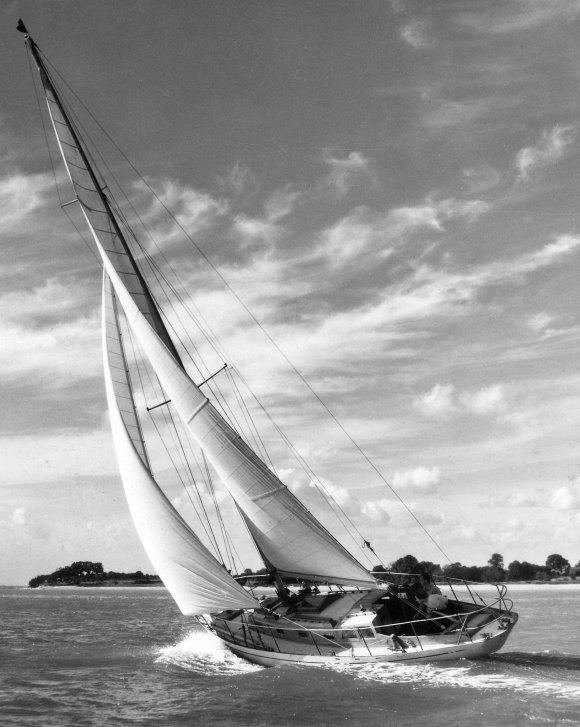
Lion class robb for sale elsewhere on the web:

Main features
| Model | Lion class robb | ||
| Length | 35.50 ft | ||
| Beam | 8.75 ft | ||
| Draft | 5.50 ft | ||
| Country | Hong Kong (Asia) | ||
| Estimated price | $ 0 | ?? |
Login or register to personnalize this screen.
You will be able to pin external links of your choice.

See how Sailboatlab works in video
| Sail area / displ. | 14.05 | ||
| Ballast / displ. | 28.17 % | ||
| Displ. / length | 405.71 | ||
| Comfort ratio | 43.35 | ||
| Capsize | 1.45 |
| Hull type | Monohull fin keel | ||
| Construction | Fiberglass | ||
| Waterline length | 25 ft | ||
| Maximum draft | 5.50 ft | ||
| Displacement | 14200 lbs | ||
| Ballast | 4000 lbs | ||
| Hull speed | 6.70 knots |
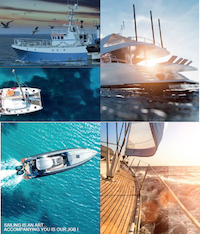
We help you build your own hydraulic steering system - Lecomble & Schmitt
| Rigging | Masthead Sloop | ||
| Sail area (100%) | 513 sq.ft | ||
| Air draft | 0 ft | ?? | |
| Sail area fore | 247.04 sq.ft | ||
| Sail area main | 266.22 sq.ft | ||
| I | 38.30 ft | ||
| J | 12.90 ft | ||
| P | 34.80 ft | ||
| E | 15.30 ft |
| Nb engines | 1 | ||
| Total power | 0 HP | ||
| Fuel capacity | 0 gals |
Accommodations
| Water capacity | 0 gals | ||
| Headroom | 0 ft | ||
| Nb of cabins | 0 | ||
| Nb of berths | 0 | ||
| Nb heads | 0 |
Builder data
| Builder | Cheoy Lee Shipyard | ||
| Designer | Arthur Robb | ||
| First built | 1951 | ||
| Last built | 1965 | ||
| Number built | 150 |
Other photos

Modal Title
The content of your modal.
Personalize your sailboat data sheet

Specifications LION CLASS (ROBB)
Home - Sailboat Listings 1951 - 35.50 ft / 10.82 m - Arthur Robb - Cheoy Lee Yachts (HK) Bickfords - Woodnutts (UK)
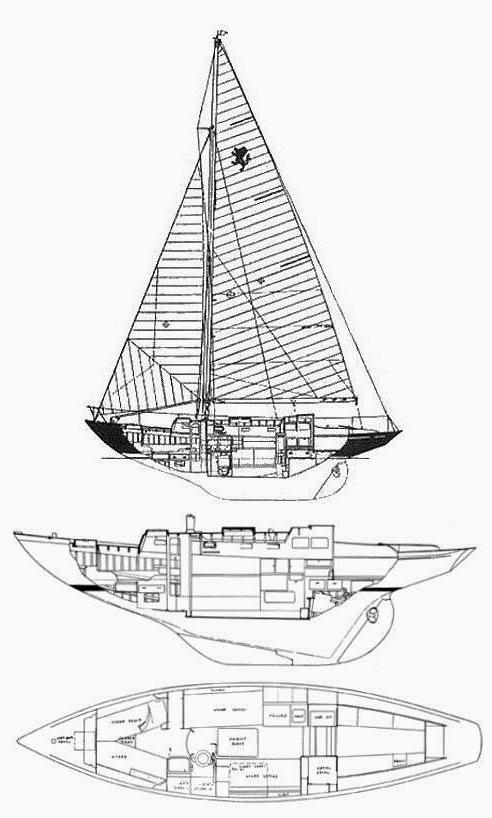
LION CLASS (ROBB) Sailboat Data
Hull Type: Fin Keel Rigging Type: Masthead Sloop LOA: 35.50 ft / 10.82 m LWL: 25.00 ft / 7.62 m S.A. (reported): 513.00 ft² / 47.66 m² Beam: 8.75 ft / 2.67 m Displacement: 14,200.00 lb / 6,441 kg Ballast: 4,000.00 lb / 1,814 kg Max Draft: 5.50 ft / 1.68 m Construction: Teak/FG First Built: 1951 Last Built: 1965 # Built: 150 Builder: Cheoy Lee Yachts (HK) Bickfords, Woodnutts (UK) Designer: Arthur Robb
Information from sailboatdata.com .
Hull Speed: 6.70 kn
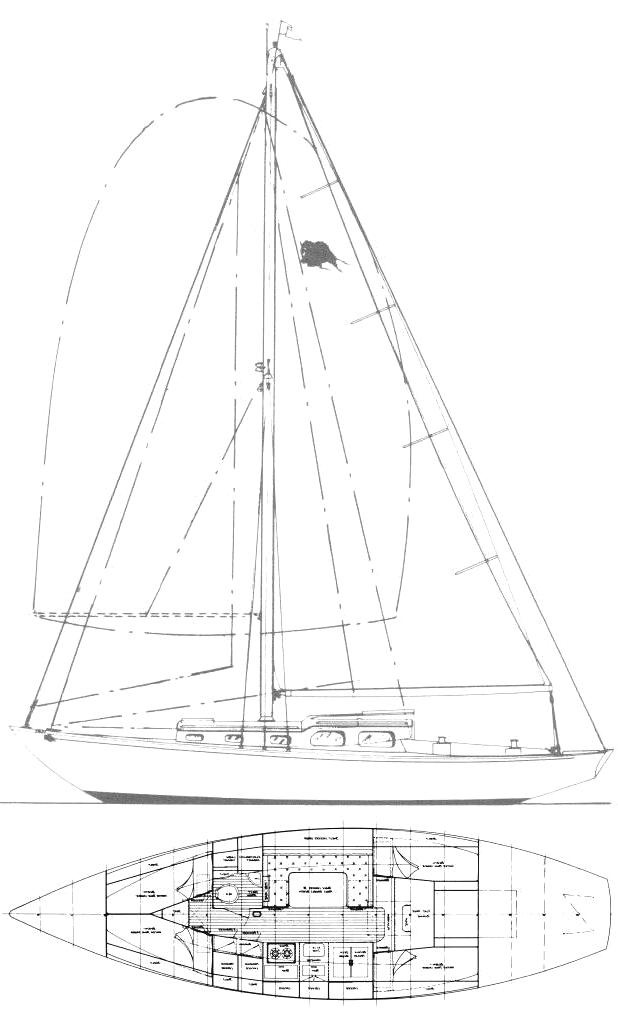
- Sailing Yachts
- Motor Yachts
- Small Craft
- Classic Yachts
- Sell Your Boat
TEL/FAX +44(0)1803 833899 | [email protected]
Sailing yachts
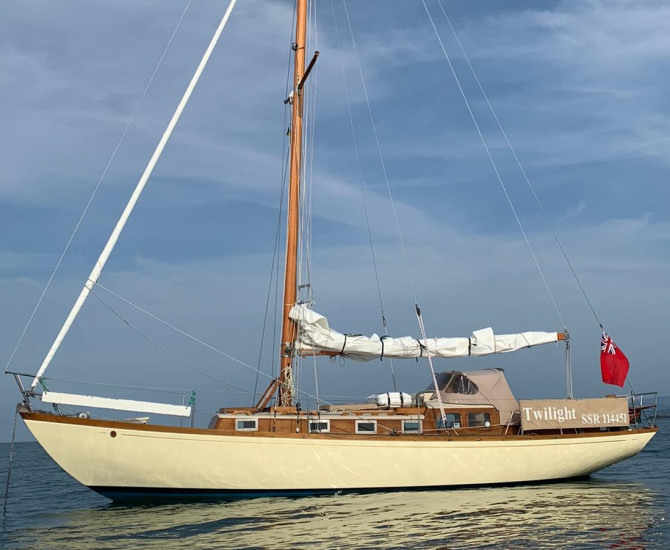
Arthur Robb Lion Class
- Designer: Arthur Robb
- Builder: Cheoy Lee, Hong Kong
- Location: North Wales
- Length on deck: 35'6"
- Draft: 5'7"
- Tonnage: 9TM
Enquire about Arthur Robb Lion Class
Email us: [email protected]
Alternatively please fill in this form and we will contact you about this boat
- Contact number
- By using this form you agree with the storage and handling of your data by this website. *
Apply for finance
Visit our partner’s website to apply for finance
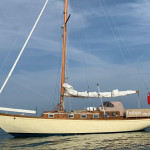
Full specification
Wooden Ships Comments on this Arthur Robb Lion Class
Designed by Arthur C. Robb and built by the Cheoy Lee Shipyard, Hong Kong in 1961.
The Lion Class was a very successful design from the eminent Arthur C. Robb. Many examples (including this one) were built by the Cheoy Lee Shipyard in Hong Kong benefitting from the close proximity of tropical forests where the best teak could be sourced.
The Lion Class was built in deep and shallow draft variants, this yacht being the deeper type at 5’7” with a reasonably cut away forefoot making her nimble and quick in the turn. Elegant stretched ends with a sleek counter and a very sweet sheer line which is helped by the low profile coachroof.
This yacht has benefited from an incredible amount of diligent refit work by the three most recent owners. Initially in Bermuda during the 90’s where much of the interior was altered and bronze strap floors fitted replacing the original steel. After crossing the Atlantic several times and competing very successfully in the Antigua Classics regatta in 2004 and 2005 she came back to the UK. Her successful racing career continued with notable results in the Round The Island race and other classic regattas.
In the following ownership she had a good deal of updating including a new engine, systems and rig with a thorough cosmetic spruce up but in the current ownership the standard of finish, systems, and structural maintenance were taken to a new level with major work to include dropping of the ballast keel and replacement of all keel bolts, some beefing up of the centreline structure and the yawl rig replaced by a beautiful custom made fractional sloop rig in full length Oregon pine to the original drawings. All work carried out by David Moss Boatbuilders who are well known for their exceptional quality.
Other work carried out during the refit included new timber hatches to replace modern ones, much improved access to the drive and stern gland, a new fuel tank, rudder bearings and a Featherstream four bladed folding prop giving much improved performance under sail.
The work was completed by a back to bare timber repaint and professional varnish work. A new suit of top quality tri-radial sails by Goachers put the finishing touches to what is now a top class yacht in superb order.
A shakedown season in the Irish Sea and Western Approaches during 2022 allowed thorough testing of the new rig and systems. The yacht has been stored under cover since and is in ready to sail condition.
Length on Deck 35’6”
Length Waterline 25’
Beam 8’9”
Draft 5’7”
Thames Tonnage 9TM
Construction
- Planked in teak, splined above the waterline, all copper fastened to closely spaced steamed timbers. Hood ends and garboards fastened with bronze screws.
- Doubled frames in way of the chain plates. Two enormous full length stringers.
- Bronze strap floors across the centreline with bronze bolts.
- External iron ballast keel lowered from the boat in 2022. Epoxy coated and all new mild steel keel bolts in 2022.
Decks and cockpit
- Marine plywood deck sheathed externally with epoxy glass cloth and finished with cream deck paint. Wide side decks for easy movement.
- Varnished teak toe rail all round with profiled scuppers.
- Gas bottle store on aft deck.
- Stainless steel pulpit and push pit (with teak seating and outboard storage bracket).
- Self draining cockpit with varnished teak thwarts. Sealed sole hatch gives access to stern gland and gearbox.
- Sloping teak capping boards on the coamings serve as bases to sheet winches and provide excellent seating when heeled. T
- iller steering (all bearings and seals replaced 2022) with rudder stock at aft end of cockpit. Tiller hinged for access.
- Large lockers beneath varnished teak cockpit seats.
- Fuel tank access and small locker under bridge deck.
- Teak grating to cockpit floor.
Superstructure
- Varnished teak coachroof coamings with bronze framed portholes either side.
- The low coachroof lifts at the aft end to a small doghouse giving ample standing headroom to galley and chart table.
- New teak forehatch on coachroof. Hatch to large anchor and fender locker on foredeck.
- Varnished teak dorade boxes with bronze vents give ventilation.
- Varnished teak skylight over saloon.
- The doghouse has a garage for the offset sliding main hatch.
- A fitted spray hood on a stainless frame gives marvellous shelter to the cockpit.
- Complete new rig to original Arthur Robb design installed in 2022.
- Fractional bermudan sloop rig on new timber spars. Mast is of hollow construction using full lengths of Oregon pine. Deck stepped as designed with a steel ring frame below.
- Stainless steel standing rigging and bespoke fittings all new in 2022. Internal stainless stee chain plates.
- Varnished wooden slab reefing boom new in 2022.
- Running rigging all new in 2022.
- Sailspar headsail roller furling system.
- Laminate Tri-radial mainsail and genoa by Goachers new in 2022.
- Storm jib and asymmetric spinnaker.
- Pair of Lewmar ST40 cockpit sheet winches. Pair of smaller spinnaker winches In cockpit.
- Lewmar ST30 on coachroof to handle lines running aft.
- 2 bronze winches on mast. One stainless reefing winch on boom.
- Beta Marine 3 cyl. 25hp fresh water cooled diesel installed 2013.
- Stainless shaft (new 2022) to a Featherstream four bladed prop gives 7kts max. Single lever controls in cockpit.
- Domestic hot water calorifier connected to engine.
- 15 gallon stainless steel fuel tank under bridge deck.
- 2x 40 gallon epoxy lined fresh water tanks under berths.
- 2 x 12v heavy duty AGM batteries for engine starting and domestic (new 2017)
- 1x 12v heavy duty battery for anchor windlass.
Accommodation
- 4 berths in total. Double or twin V- berth forward and two saloon settee berths.
- Steps down over engine box from companion hatch to saloon. Large removable varnished teak box for tools etc on engine box lid.
- Galley to port, chart desk starboard.
- Saloon berths are staggered and extendable outwards. Sbd berth has a trotter box under chart table. Very comfortable saloon cushions and seating area.
- Large lockers behind berths. Bookshelf locker and drinks cabinet with glazed doors to fwd ends.
- Centreline folding teak table on stainless legs.
- Passageway fwd offset slightly to forecabin. 2 berths with infill to make double. Small washbasin with hot and cold water over hanging locker. Storage drawer and lockers under berths.
- Force 10 gimballed stainless steel three burner cooker with oven and grill. Single bowl sink with pressurised hot and cold water.
- Ample storage behind galley for kitchenware, glasses etc.
- Heads compartment fwd to starboard with a Jabsco sea toilet pumping directly overboard.
- Steering compass x2.
- NASA log and sounder.
- Ray marine autohelm 4000.
- Tacktick wind indicator.
- Standard Horizon CP300i chart plotter.
- ICOM DSC VHF radio (2022)
- Clock and barometer
- Bunk and berth cushions
- Force 10 3 burner gas cooker with oven and grill
- Jabsco manual sea toilet
- Stereo cd player radio
- 2 x 12 v automatic bilge pumps
- Manual Whale bilge pump
- 4 man canister Crewsaver iso ocean life raft. New 2022
- Fire extinguisher
- Fire blanket in galley
- 35lb genuine Bruce anchor
- 40m x 10 mm galvanised chain plus 20m heavy anchorplait
- 30lb danforth type anchor on chain and 40m anchorplait
- Lofrans 12v manual and electric anchor windlass.
- Mooring warps
- Mainsail by Goachers, 2022
- Genoa by Goachers, 2022
- Asymmetric spinnaker
- Pair of Lewmar ST40 cockpit sheet winches
- Pair of secondary non-ST cockpit sheet winches
- Lewmar 30ST on coachroof
- Pair of bronze non-ST mast winches
- Boom reefing winch
- Sailspar roller furling headsail system
- Cream canvas spray hood
- Cream canvas dodgers
- Cream canvas hatch covers
- Cream canvas cockpit cover
- Stainless folding boarding ladder
- Sundry engine spares and manual
Wooden Ships classic yachts brokers have an extensive database of boats for sale. With a wide range of sailboats , classic yachts , motor yachts and small classic boats , Wooden Ships has one of the largest selections of traditional wooden boats and yachts for sale in the UK.
Disclaimer:
These particulars have been prepared in good faith from information provided by the Vendors and are intended as a guide, Wooden Ships cannot guarantee or warrant the accuracy of this information nor warrant the condition of the vessel. The Purchaser should instruct his agent or surveyor to validate all details as necessary and satisfy himself with the condition of the vessel and its equipment.
Latest listings

Iain Oughtred Ptarmigan

Morgan Giles West Channel Class


Oystercatcher 16 Gaff Cutter
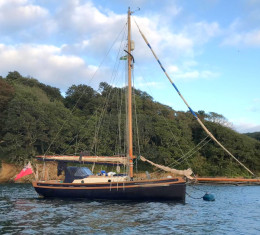
Heard 28 Gaff Cutter
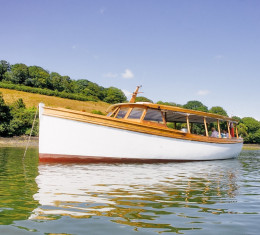
Commercial Dining Charter Vessel
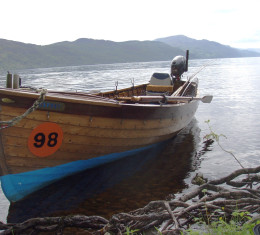
16′ Clinker Motor Dinghy
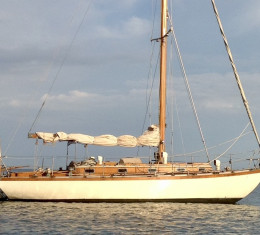
35′ Buchanan Sloop
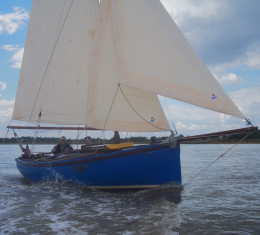
Golant Gaffer Gaff Cutter
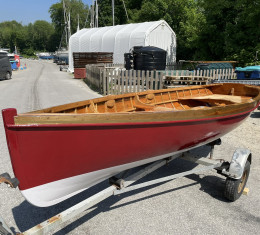
New Build William Ferris Rowing Punt
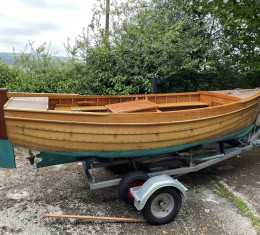
12’6″ Nick Smith Motor Launch

Turks of Kingston Rowing Skiff
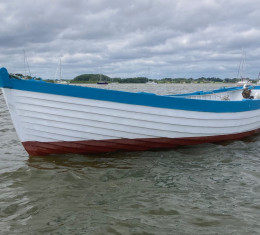
Aldeburgh Beach Boat
Facebook posts.
Share on Facebook Share on Twitter Share on Linked In Share by Email
This content isn't available right now
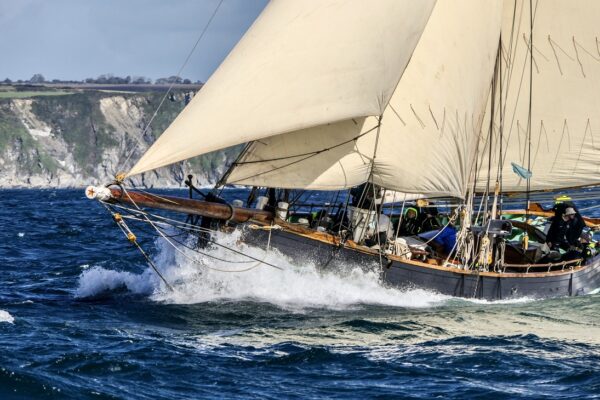
How to Sell a Yacht
September 5th 2022
How to sell a classic yacht – 10 things to expect from your broker. Selling a classic yacht can be daunting, but working with a broker can simp…


- Parker Boats
- SBS 2020 Walkthrough
- All Boats For Sale
- New Boats For Sale
- Pre-Owned Inventory
- Great Boats We Have Sold
- Trailers for Sale
- Buying A Boat: The Whole Story
- AB&YS Interview
- SARGO – Soundings
- SARGO – PassageMaker
- SARGO – Southern Boating
- SARGO – Alaska
- Annual Spring Rendezvous
- The IPY Story
1964 Cheoy Lee Lion Class Sloop
$24,000.

1964 Cheoy Lee Lion Class Sloop w/75hp Yanmar Diesel
A classic with much to love: Fiberglass hull, bright wooden interior, economical 75hp Yanmar diesel engine (installed in 2002).
Specifications
Additional info, basic boat info, engines / speed.
- Make: Yanmar
- Model: 3GM30
- Fuel: Diesel
- Engine Power: 75hp
- Type: Inboard
- Engine Location: Center
- Engine Hours: 1,500
- Request Info
Contact Form Submission
Send request.
We have placed cookies on your device to help make this website better.
You can use this tool to change your cookie settings. Otherwise, we’ll assume you’re OK to continue.
Some of the cookies we use opens in a new tab/window are essential for the site to work.
We also use some non-essential cookies to collect information for making reports and to help us improve the site. The cookies collect information in an anonymous form.
To control third party cookies, you can also adjust your browser settings opens in a new tab/window .
Our server will be updated in 5 min., sorry for the bump and inconvenience.

- Create user
- Insert an ad
Lion Class (Arthur Robb) Lion Class (Arthur Robb) 35
Build year: 1964, contact de valk kiel, germany, sailing boat for sale.
-lion-class-(arthur-robb)-35-scanboat-picture-26001464.jpg)
185,000 EUR
- De Valk Kiel
- Hermann Rennerstrasse 12
- DE 22609 Hamburg
- +49 1712312133
Description
Model: LION CLASS (ARTHUR ROBB) 35 Type: sailing yacht LOA (m): 10,66 Beam (m): 2,63 Draft (m): 1,81 Headroom (m): 1,85 Year built: 1964 Launched: 1964 Builder: Choey Lee Shipyard Ltd. Country: Hong Kong Designer: Arthur Robb Displacement (t): 6,3 CE norm: NA Hull material: wood Hull colour: white Hull shape: full bilged Superstructure material: teak Rubbing strake: yes Deck material: teak Deck finish: New 2020 teak Cockpit deck finish: teak Antifouling (year): 2023/24 Dorades: yes Window frame: New stainless steel Window material: glass Deckhatch: yes Fuel tank (litre): 60 steel Freshwater tank (litre): 120 steel Blackwater tank (litre): 45 Tiller: yes The yacht has undergone a thorough cosmetic refresh in her current ownership, as well as the more serious structural work, so that she is now in excellent condition and attracts admiring glances wherever she is sailed. The Arthur Robb Lion Class is a classic racing cruiser - and in this mode is as suitable for long crossings as she is for short trips. She is spacious and comfortable below decks. With a headroom of approx.1.90 m even for larger owners. This solid yacht delights every sailor's heart and an enthusiasm for noble classic yachts. A visit will convince you of the beauty of this yachtFor more information: LION CLASS (ARTHUR ROBB) 35 for sale at De Valk Yacht Brokers - Click here:
Model: LION CLASS (ARTHUR ROBB) 35 Type: sejlbåd LOA (m): 10,66 Bredde (m): 2,63 Dybgang (m): 1,81 Ståhøjde (m): 1,85 Byggeår: 1964 Søsat: 1964 Bygger: Choey Lee Shipyard Ltd. Land: Hong Kong Designer: Arthur Robb Deplacement (t): 6,3 CE-norm: NA Skrovmateriale: træ Skrovfarve: hvid Skrovsform: fuld skrog Overbygningsmateriale: teak Rubbingstrake: ja Dækmateriale: teak Dækfinish: Nyt teak fra 2020 Cockpit dækfinish: teak Bundmaling (år): 2023/24 Dorades: ja Vinduesramme: Nyt rustfrit stål Vinduesmateriale: glas Dæksluge: ja Brændstoftank (liter): 60 stål Ferskvandstank (liter): 120 stål Spildevandstank (liter): 45 Rorpind: ja Yachten har gennemgået en omfattende kosmetisk opdatering i den nuværende ejerskab, samt mere alvorligt strukturelt arbejde, så den nu er i fremragende stand og tiltrækker beundrende blikke, uanset hvor hun sejles. Arthur Robb Lion Class er en klassisk racer-krydser - og i denne tilstand er hun lige så velegnet til lange krydsninger som til korte ture. Hun er rummelig og komfortabel under dæk. Med en ståhøjde på ca. 1,90 m, selv for større ejere. Denne solide yacht glæder enhver sejlers hjerte og entusiasme for ædle klassiske både. Et besøg vil overbevise dig om skønheden ved denne yacht. For mere information: LION CLASS (ARTHUR ROBB) 35 til salg hos De Valk Yacht Brokers - Klik her: [link] Yachten har gennemgået en omfattende kosmetisk opfriskning i hendes nuværende ejerskab, samt mere alvorligt strukturelt arbejde, så hun nu er i fremragende stand og tiltrækker beundrende blikke, uanset hvor hun sejles. Arthur Robb Lion Class er en klassisk kapsejlads krydser - og i denne tilstand er hun lige så egnet til lange krydsninger som til korte ture. Hun er rummelig og komfortabel under dæk. Med en loftshøjde på ca. 1,90 m selv for større ejere. Denne solide yacht glæder enhver sejlers hjerte og en entusiasme for ædle klassiske yachter. Et besøg vil overbevise dig om skønheden af denne yacht.
Modell: LION CLASS (ARTHUR ROBB) 35 Typ: segelyacht LOA (m): 10,66 Bredd (m): 2,63 Djupgående (m): 1,81 Ståhöjd (m): 1,85 Byggår: 1964 Sjösatt: 1964 Tillverkare: Choey Lee Shipyard Ltd. Land: Hong Kong Designer: Arthur Robb Deplacement (t): 6,3 CE-norm: NA Skrovmaterial: trä Skrovfärg: vit Skrovform: fullt rundad Överbyggnadsmaterial: teak Fenderlist: ja Däckmaterial: teak Däckfinish: Ny teak från 2020 Däck i sittbrunn: teak Bottenmålning (år): 2023/24 Dorader: ja Fönsterramar: Nya i rostfritt stål Fönstermaterial: glas Lucka i däck: ja Bränsletank (liter): 60 stål Färskvattentank (liter): 120 stål Svartvattentank (liter): 45 Rorkult: ja Yachten har genomgått en grundlig kosmetisk uppdatering under nuvarande ägande, samt mer omfattande strukturella arbeten, så att den nu är i utmärkt skick och drar till sig beundrande blickar var den än seglas. Arthur Robb Lion Class är en klassisk racingkryssare - och i den här modellen är den lika lämplig för långa överfarter som för korta resor. Den är rymlig och bekväm under däck. Med en ståhöjd på ca 1,90 m även för större ägare. Denna gedigna yacht förtjusar varje seglares hjärta och entusiasm för ädla klassiska yachter. Ett besök kommer att övertyga dig om skönheten hos denna yacht. För mer information: LION CLASS (ARTHUR ROBB) 35 till salu hos De Valk Yacht Brokers - Klicka här: [link] Yachten har genomgått en noggrann kosmetisk uppdatering under sin nuvarande ägande, liksom mer allvarligt strukturellt arbete, så att hon nu är i utmärkt skick och drar till sig beundrande blickar vart hon än seglas. Arthur Robb Lion Class är en klassisk racerkryssare - och i denna modell är hon lika lämplig för långa överfarter som för korta resor. Hon är rymlig och bekväm under däck. Med en takhöjd på ca 1,90 m även för större ägare. Denna gedigna yacht gläder varje seglares hjärta och entusiasmen för ädla klassiska yachter. Ett besök kommer att övertyga dig om skönheten hos denna yacht.
Model: LION CLASS (ARTHUR ROBB) 35 Type: zeiljacht Lengte over alles (m): 10,66 Breedte (m): 2,63 Diepgang (m): 1,81 Stahoogte (m): 1,85 Bouwjaar: 1964 Te water gelaten: 1964 Werf: Choey Lee Shipyard Ltd. Land: Hong Kong Ontwerper: Arthur Robb Waterverplaatsing (t): 6,3 CE-norm: niet van toepassing Rompmateriaal: hout Rompkleur: wit Rompvorm: volle kim Opbouwmateriaal: teak Stootlijst: ja Dekmateriaal: teak Dekafwerking: Nieuw teak 2020 Kuipdekafwerking: teak Antifouling (jaar): 2023/24 Dorades: ja Raamkozijn: Nieuw roestvrij staal Raammateriaal: glas Dekluik: ja Brandstoftank (liter): 60 staal Watertank (liter): 120 staal Vuilwatertank (liter): 45 Helmstok: ja Deze zeilboot heeft een grondige cosmetische opfrisbeurt ondergaan tijdens het huidige eigendom, evenals meer serieuze structurele werkzaamheden, zodat ze nu in uitstekende staat verkeert en bewonderende blikken trekt waar ze ook vaart. De Arthur Robb Lion Class is een klassieke racercruiser - en in deze modus is ze even geschikt voor lange overtochten als voor korte trips. Ze is ruim en comfortabel onderdeks. Met een stahoogte van ongeveer 1,90 m zelfs voor grotere eigenaren. Deze solide zeilboot maakt elke zeiler blij en is een enthousiasme voor nobele klassieke jachten. Een bezoek zal u overtuigen van de schoonheid van deze zeilboot. Voor meer informatie: LION CLASS (ARTHUR ROBB) 35 te koop bij De Valk Yacht Brokers - Klik hier: [link] De jacht heeft een grondige cosmetische opfrisbeurt ondergaan tijdens het huidige eigendom, evenals meer serieuze structurele werkzaamheden, zodat ze nu in uitstekende staat verkeert en bewonderende blikken trekt waar ze ook vaart. De Arthur Robb Lion Class is een klassieke racercruiser - en in deze modus is ze even geschikt voor lange overtochten als voor korte trips. Ze is ruim en comfortabel onderdeks. Met een stahoogte van ca. 1,90 m zelfs voor grotere eigenaren. Deze solide jacht doet het hart van elke zeiler sneller kloppen en wekt enthousiasme voor nobele klassieke jachten. Een bezoek zal u overtuigen van de schoonheid van deze jacht.
Modell: LION CLASS (ARTHUR ROBB) 35 Typ: Segelyacht Länge über alles (m): 10,66 Breite (m): 2,63 Tiefgang (m): 1,81 Stehhöhe (m): 1,85 Baujahr: 1964 Stapellauf: 1964 Werft: Choey Lee Shipyard Ltd. Land: Hongkong Designer: Arthur Robb Verdrängung (t): 6,3 CE-Norm: nicht zutreffend Rumpfmaterial: Holz Rumpffarbe: weiß Rumpfform: voller Kiel Aufbautenmaterial: Teakholz Scheuerleiste: ja Decksmaterial: Teakholz Deckfinish: Neues Teakholz von 2020 Cockpit-Deckfinish: Teakholz Antifouling (Jahr): 2023/24 Dorades: ja Fensterrahmen: Neues Edelstahl Fenstermaterial: Glas Decksluke: ja Kraftstofftank (Liter): 60 Stahl Frischwassertank (Liter): 120 Stahl Schwarzwassertank (Liter): 45 Pinne: ja Die Yacht hat unter der aktuellen Eigentümerschaft eine gründliche kosmetische Auffrischung sowie ernsthaftere strukturelle Arbeiten durchlaufen, sodass sie sich jetzt in ausgezeichnetem Zustand befindet und bewundernde Blicke auf sich zieht, egal wo sie gesegelt wird. Die Arthur Robb Lion Class ist ein klassischer Rennkreuzer und eignet sich sowohl für lange Überfahrten als auch für kurze Ausflüge. Unter Deck ist sie geräumig und komfortabel. Auch größere Besitzer finden mit einer Stehhöhe von ca. 1,90 m ausreichend Platz. Diese solide Yacht erfreut das Herz eines jeden Seglers und weckt Begeisterung für edle klassische Yachten. Ein Besuch wird Sie von der Schönheit dieser Yacht überzeugen. Weitere Informationen: LION CLASS (ARTHUR ROBB) 35 zum Verkauf bei De Valk Yacht Brokers - Klicken Sie hier: [Link] Die Yacht wurde während des aktuellen Besitzes einer gründlichen kosmetischen Auffrischung unterzogen, ebenso wie ernsthaftere strukturelle Arbeiten, so dass sie sich jetzt in ausgezeichnetem Zustand befindet und bewundernde Blicke auf sich zieht, wohin auch immer sie gesegelt wird. Die Arthur Robb Lion Class ist ein klassischer Rennkreuzer - und in diesem Modus gleichermaßen für lange Überfahrten wie für kurze Ausflüge geeignet. Unter Deck ist sie geräumig und komfortabel. Mit einer Stehhöhe von ca. 1,90 m auch für größere Besitzer geeignet. Diese solide Yacht erfreut jedes Seglerherz und weckt Begeisterung für edle klassische Yachten. Ein Besuch wird Sie von der Schönheit dieser Yacht überzeugen.
Materiale / unit
Deplacement
Motor & technic
Total power
Engine count
Engine place
Engine hours
Sellers boats
Gallery ads
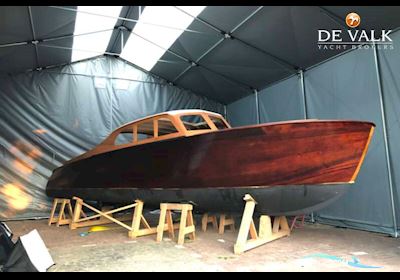
Your e-mail is now sent. This window will be close automatically
-lion-class-(arthur-robb)-35-scanboat-picture-26001464.jpg)
Quick Contact
I prefer to have sellers reply in (choose min. 1 language):, we translate into sellers preferred language, fast and easy, highlight your ad.
Choose Basic, Focus or Boost
To ensure your ad is with photo and info on the list pages and easily accessible on the details page, please choose Basic, Focus or Boost
When your ad is visible, you also get a faster sale!
Please Confirm
Are you sure you want to do this.
Link is sent to your registered scanboat mail
This website uses cookies
We use cookies to improve the user experience. Choose which cookies you want to use. You can read more about our Cookie Policy here.
1965 lion class sailboat
1965 cheoy lee.
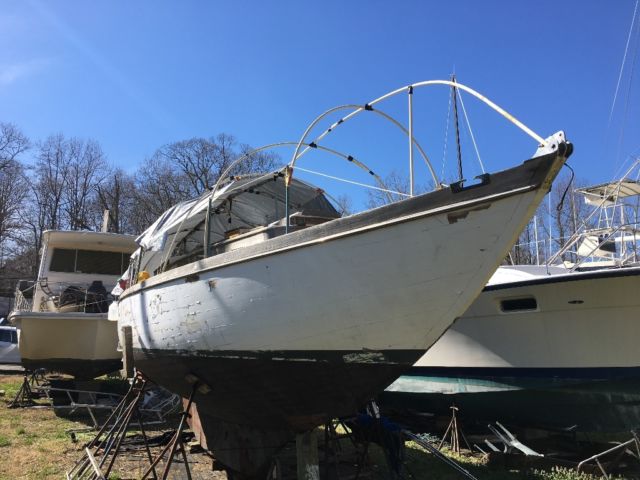
- Price: Contact seller
- Condition: Used
- Make: Cheoy Lee
- Location: Saint Leonard, Maryland, United States
Description
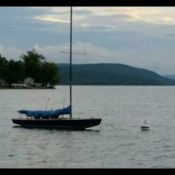
- Bass Tracker
- Boston Whaler
- Carver Boats
- Champion Boats
- Chris Craft
- Correct Craft
- Cruisers Yachts
- Grady White
- Hydra-Sports
- Mastercraft
- Other makes
- Sleek Craft
- Sun Tracker
× You are using an outdated browser. Please upgrade your browser to improve your experience.
We Ship Worldwide! | FREE SHIPPING! for US Continental orders over $99. Click for details.

Shopping Cart
Your cart is currently empty..
FREE SHIPPING! for US Continental orders over $99 click for details
Lion Class - Sailboat Data, Parts & Rigging
Sailboat data directory for sailboats manufacturer or named Lion Class. Follow the provided links for additional sailboat data, parts and rigging specs.
Sailboat Data directory for over 8,000 sailboat designs and manufacturers. Direct access to halyards lengths, recommended sail areas, mainsail cover styles, standing rigging fittings, and lots more for all cruising and racing sailboats.
MAURIPRO Sailing offers a full range of sailboat and sailing information to help you find the correct sailboat part, one that properly would fit your sailboat and sailing style. Our sailor's and sailboat owner support team are ready to talk with you about your specific sailing needs, coming regatta, or next sailing adventure.
From all at MAURIPRO, let's Go Sailing!
Copyright © 2024 MAURIPRO Sailing LLC.
Great choice! Your favorites are temporarily saved for this session. Sign in to save them permanently, access them on any device, and receive relevant alerts.
- Sailboat Guide
H22 is a 21 ′ 11 ″ / 6.7 m monohull sailboat designed by Rob Humphreys and built by Lion Yacht starting in 1994.

Rig and Sails
Auxilary power, accomodations, calculations.
The theoretical maximum speed that a displacement hull can move efficiently through the water is determined by it's waterline length and displacement. It may be unable to reach this speed if the boat is underpowered or heavily loaded, though it may exceed this speed given enough power. Read more.
Classic hull speed formula:
Hull Speed = 1.34 x √LWL
Max Speed/Length ratio = 8.26 ÷ Displacement/Length ratio .311 Hull Speed = Max Speed/Length ratio x √LWL
Sail Area / Displacement Ratio
A measure of the power of the sails relative to the weight of the boat. The higher the number, the higher the performance, but the harder the boat will be to handle. This ratio is a "non-dimensional" value that facilitates comparisons between boats of different types and sizes. Read more.
SA/D = SA ÷ (D ÷ 64) 2/3
- SA : Sail area in square feet, derived by adding the mainsail area to 100% of the foretriangle area (the lateral area above the deck between the mast and the forestay).
- D : Displacement in pounds.
Ballast / Displacement Ratio
A measure of the stability of a boat's hull that suggests how well a monohull will stand up to its sails. The ballast displacement ratio indicates how much of the weight of a boat is placed for maximum stability against capsizing and is an indicator of stiffness and resistance to capsize.
Ballast / Displacement * 100
Displacement / Length Ratio
A measure of the weight of the boat relative to it's length at the waterline. The higher a boat’s D/L ratio, the more easily it will carry a load and the more comfortable its motion will be. The lower a boat's ratio is, the less power it takes to drive the boat to its nominal hull speed or beyond. Read more.
D/L = (D ÷ 2240) ÷ (0.01 x LWL)³
- D: Displacement of the boat in pounds.
- LWL: Waterline length in feet
Comfort Ratio
This ratio assess how quickly and abruptly a boat’s hull reacts to waves in a significant seaway, these being the elements of a boat’s motion most likely to cause seasickness. Read more.
Comfort ratio = D ÷ (.65 x (.7 LWL + .3 LOA) x Beam 1.33 )
- D: Displacement of the boat in pounds
- LOA: Length overall in feet
- Beam: Width of boat at the widest point in feet
Capsize Screening Formula
This formula attempts to indicate whether a given boat might be too wide and light to readily right itself after being overturned in extreme conditions. Read more.
CSV = Beam ÷ ³√(D / 64)
Initially designed as a kit boat for amateur builders using the ‘Prefix’ build system, (glass moldings with pre-cut plywood panels). The H22 is now being built of glass sandwich construction in Latvia. At least one class racing fleet exists in Italy.
Embed this page on your own website by copying and pasting this code.
- About Sailboat Guide
©2024 Sea Time Tech, LLC
This site is protected by reCAPTCHA and the Google Privacy Policy and Terms of Service apply.

IMAGES
VIDEO
COMMENTS
One of Arthur Robb's most popular designs and a very successful racer. (A sister ship was winner of the Sidney-Hobart Race in 1959 & 1960). Cheoy Lee shipyard built at least 20 boats of teak, many which went to the US. By the mid 1960's the same yard had developed a fiberglass version also for export to the US and elsewhere.
By the mid 1960's the same yard had developed a fiberglass version also for export to the US and elsewhere. Rig type and dimensions vary widely. The original drawings show a fractional rig. Lion Class (Robb) is a 35′ 5″ / 10.8 m monohull sailboat designed by Arthur Robb and built by Cheoy Lee Shipyard, Stebbings & Sons, and Swanson ...
The Cheoy Lee 35 Lion features a slim hull for its length, with a beam of 8 feet, 9 inches, and more than 11 feet of overhangs, which give the boat buoyancy when heeling. Six thousand pounds of ballast help balance a 475-square-foot mainsail carried on a 50-foot Sitka spruce mast. The sloop rig also includes a 275-square-foot genoa, along with ...
The Arthur Robb Lion Class is a classic racer cruiser - and in that mode as capable of long crossings as short trips, well proven by her present owner. Robustly built but with graceful lines, she's also spacious below with headroom enough for her 6 foot 4 inch tall owner, whose original intention to cruise has evolved somewhat on finding her to be such a fine racing boat. Usually cruised ...
Brokerage Of Classic & Vintage Yachts. Designed by Arthur C Robb, MBE the first Lion was built in 1950 and beat most of her contemporaries in that year's Round the Island Race. This was a fine achievement as the race was mostly to windward and she drew only 4 ft 6. She entered one other race that season and won, but she was primarily a ...
Feb 9, 2012. #1. Cheoy Lee 35 Lion Class. Nice used-boat review in Soundings: Designer Arthur Robb, a native New Zealander, was well-known in the 1950s and '60s for his offshore cruising sailboats. Cheoy Lee, the pioneering Hong Kong builder (though it was founded in Shanghai) began producing the 35 Lion Class in 1955, and more than 100 ...
The Lion class robb is a 35.5ft masthead sloop designed by Arthur Robb and built in fiberglass by Cheoy Lee Shipyard between 1951 and 1965. 150 units have been built. The Lion class robb is a very heavy sailboat which is slightly under powered. It is not stiff and has an excellent righting capability if capsized.
LION CLASS (ROBB) Sailboat Data Hull Type: Fin Keel Rigging Type: Masthead Sloop LOA: 35.50 ft / 10.82 m LWL: 25.00 ft / 7.62 m S.A. (reported): 513.00 ft² / 47.66 m² Beam: 8.75 ft / 2.67 m Displacement: 14,200.00 lb / 6,441 kg Ballast: 4,000.00 lb / 1,814 kg…
The Lion class was a class of six fast battleships designed for the Royal Navy (RN) in the late 1930s. They were a larger, improved version of the preceding King George V class, with 16-inch (406 mm) guns.Only two ships were laid down before the Second World War began in September 1939 and a third was ordered during the war, but their construction was suspended shortly afterwards.
The Lion Class was a very successful design from the eminent Arthur C. Robb. Many examples (including this one) were built by the Cheoy Lee Shipyard in Hong Kong benefitting from the close proximity of tropical forests where the best teak could be sourced. The Lion Class was built in deep and shallow draft variants, this yacht being the deeper ...
Lion Class (Arthur Robb) 35 for sale in Kiel Germany. View pictures and details of this boat or search for more Lion Class (Arthur Robb) boats for sale on boats.com. ... Model: LION CLASS (ARTHUR ROBB) 35 Type: sailing yacht LOA (m): 10,66 Beam (m): 2,63 Draft (m): 1,81 Headroom (m): 1,85 Year built: 1964 Launched: 1964 Builder: Choey Lee ...
1964 Cheoy Lee Lion Class Sloop w/75hp Yanmar Diesel A classic with much to love: Fiberglass hull, bright wooden interior, economical 75hp Yanmar diesel engine (installed in 2002). ... Basic Boat Info. Make: Cheoy Lee. Model: Lion Class Sloop. Year: 1964. Condition: Used. Category: Sail. Construction: Fiberglass. Boat Hull ID: 1291. Has Hull ID ...
Sailboat data, rig dimensions and recommended sail areas for Lion Class (Robb) sailboat. Tech info about rigging, halyards, sheets, mainsail covers and more.
Find Cheoy Lee Lion Class Sloop boats for sale in your area & across the world on YachtWorld. Offering the best selection of Cheoy Lee boats to choose from.
Find Cheoy Lee 35 boats for sale in your area & across the world on YachtWorld. Offering the best selection of Cheoy Lee boats to choose from.
Description. Model: LION CLASS (ARTHUR ROBB) 35 Type: sailing yacht LOA (m): 10,66 Beam (m): 2,63 Draft (m): 1,81 Headroom (m): 1,85 Year built: 1964 Launched: 1964 Builder: Choey Lee Shipyard Ltd. Country: Hong Kong Designer: Arthur Robb Displacement (t): 6,3 CE norm: NA Hull material: wood Hull colour: white Hull shape: full bilged Superstructure material: teak Rubbing strake: yes Deck ...
Arthur Robb. 1908 — 1969. Arthur Cecil Robb was a British yacht designer working in London, England, after World War II. Born in New Zealand, by 1930 he was employed as yard manager at the boat building firm of Morris & Lorimers, Argyll, Scotland. During World War II he was a Reserve Officer in the British Royal Navy attaining the rank of ...
Shenandoah - 1965 CHEOY LEE 35' 2" 35 Lion Class CONTACT Similar Listings For Sale New Search. Shenandoah is a 35' 2" (10.72m) Classic Yacht built by CHEOY LEE and delivered in 1965. Photos and specifications available below. Find yachts and boats listed for sale and ones off the market in our YATCO Yacht & Boat Directory. This web page ...
1965 lion class sailboat 1965 Cheoy Lee. Price: Contact seller; Condition: Used; Make: Cheoy Lee; Year: 1965; Location: Saint Leonard, Maryland, United States; Description this is a very classic 1965 ALL TEAK lion class sloop. Have all rigging, mast and boom, (both wood), new main sail, spare main, jib, and storm jib, engine is a atomic four ...
1965 Cheoy Lee Laurent Giles Wanderer Class. US$32,407. boatpoint at Royal Quays Marina | Blyth, Northumberland. Request Info; ... St. Clair Sailboat Center | Saint Clair Shores, Michigan. Request Info; New Arrival; 1979 Cheoy Lee 38 Offshore. ... 1964 Cheoy Lee Lion Class Sloop. US$24,000. ↓ Price Drop. Inside Passage Yacht Sales | Lopez ...
Sailboat data directory for sailboats manufacturer or named Lion Class. Follow the provided links for additional Sailboat data, parts and rigging specs.
Measuring 43.4 meters (142 feet), Lionheart is the longest J Class in existence. She also has astounding 17-meter (56-foot) overhangs. She's built entirely of aluminum, something the new J Class rules permits (the original Js were made of steel). Her builder, Claasen Jachtbouw, had a good working relationship with Hoek, having constructed 16 ...
H22 is a 21′ 11″ / 6.7 m monohull sailboat designed by Rob Humphreys and built by Lion Yacht starting in 1994. ... the more easily it will carry a load and the more comfortable its motion will be. The lower a boat's ratio is, the less power it takes to drive the boat to its nominal hull speed or beyond. ... At least one class racing fleet ...